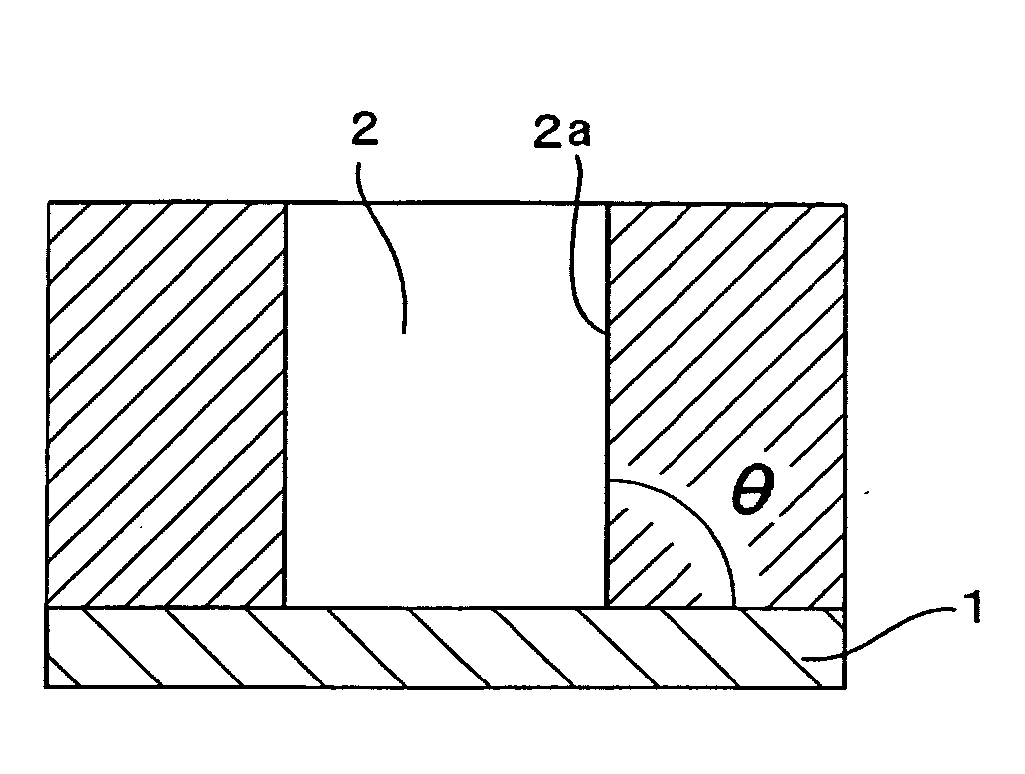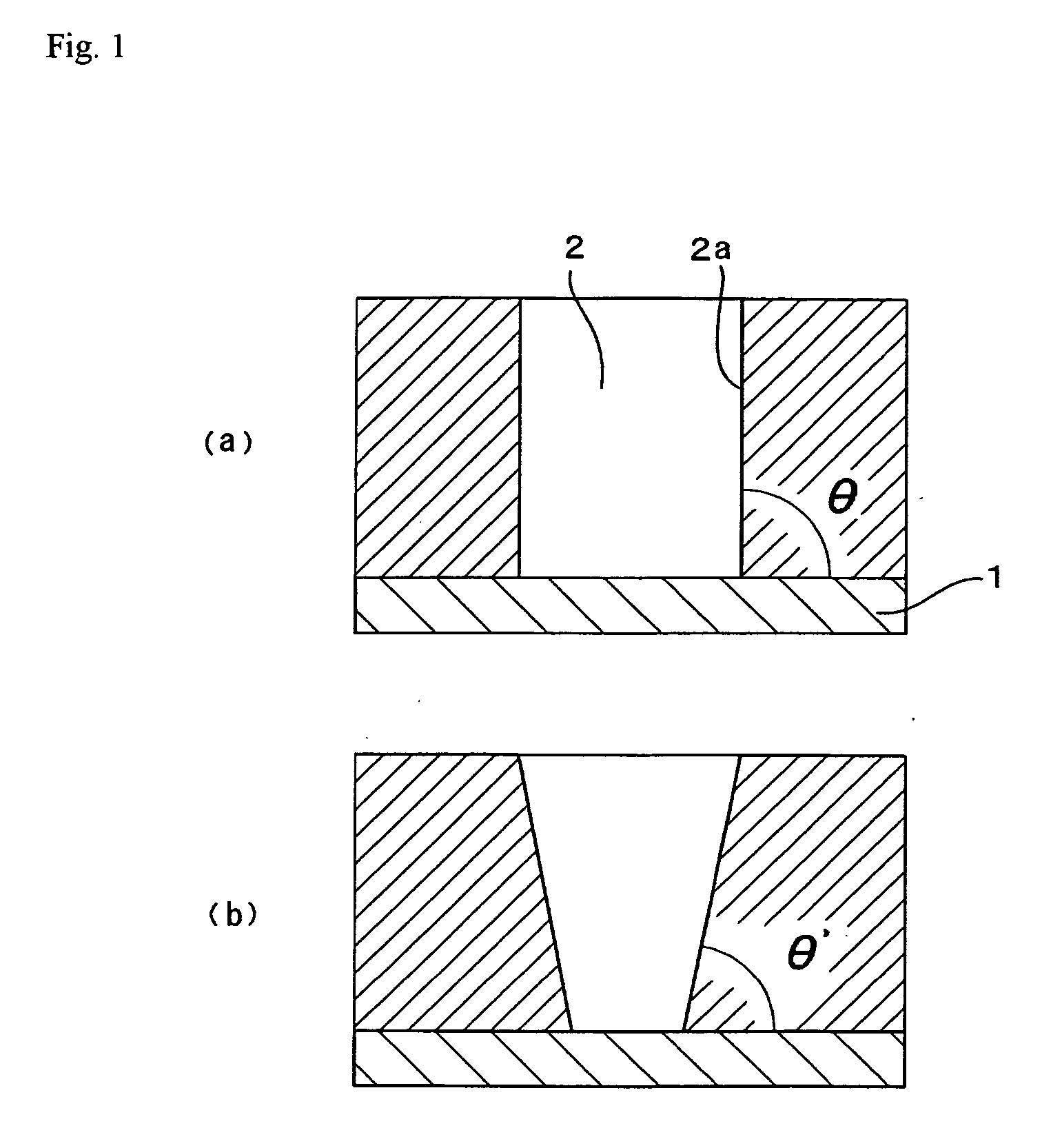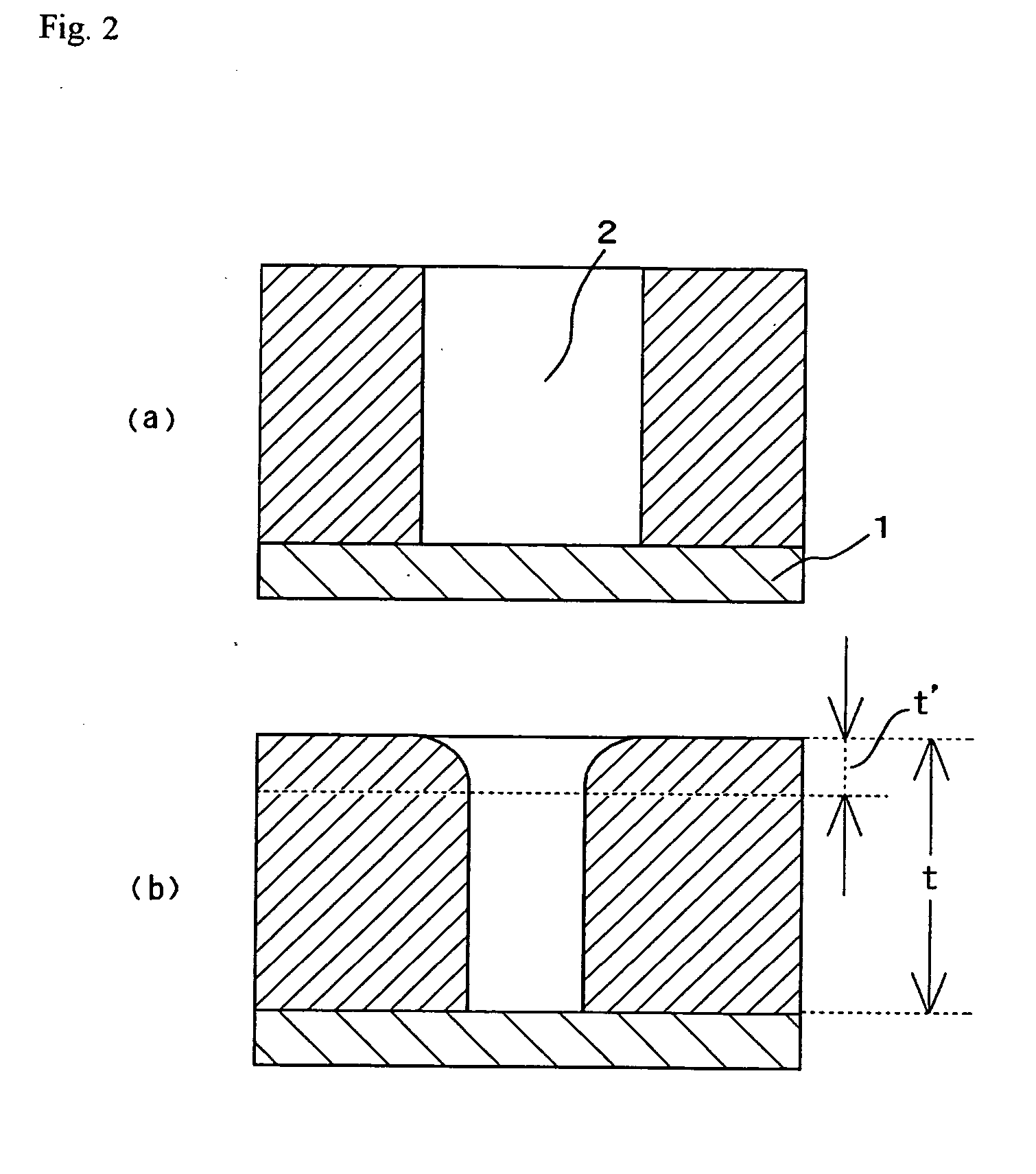Resin Composition for Forming Fine Pattern and Method for Forming Fine Pattern
- Summary
- Abstract
- Description
- Claims
- Application Information
AI Technical Summary
Benefits of technology
Problems solved by technology
Method used
Image
Examples
synthesis example 1
[0074]
[0075] 100 g of p-t-butoxystyrene (P-1-1), 10 g of styrene (P-1-2), and 9.0 g azobisisobutyronitrile were dissolved in propylene glycol monomethyl ether and reacted at 80° C. for 9 hours to polymerize monomers. The polymerization product was purified by precipitation from methanol to obtain 100 g of a p-t-butoxystyrene and styrene copolymer with an Mw of 7,300 and Mw / Mn of 1.80. The copolymer and 50 g of 10 wt % sulfuric acid aqueous solution were dissolved in 300 g of propylene glycol monomethyl ether and hydrolyzed at 90° C. for six hours. The reaction product was purified by precipitation in a large amount of water until the product was neutralized to obtain 65 g of a copolymer of p-hydroxystyrene and styrene (85:15 mol ratio) with an Mw of 5,500 and Mw / Mn of 1.55. This copolymer is indicated as a resin P-1.
[0076] Mw and Mn of the resin P-1 and other polymers obtained in the following Synthesis Examples were measured by gel permeation chromatography (GPC) using GPC columns...
synthesis example 2
[0077] A polymerization reaction was carried out in the same manner as in the Synthesis Example 1 except for changing the amount of styrene to 20 g and the amount of azobisisobutyronitrile to 10 g to obtain 70 g of a copolymer of p-hydroxystyrene and styrene (75:25 mol ratio) with an Mw of 5,200 and Mw / Mn of 1.51. This copolymer is indicated as a resin P-2.
synthesis example 3
[0078]
[0079] The polymerization was carried out in the same manner as in Synthesis Example 1, except for using 20 g of p-methoxystyrene (P-3-2) instead of styrene, followed by hydrolysis with an acid to obtain 78 g of a copolymer of p-hydroxystyrene and p-methoxystyrene (80:20 mol ratio) with an Mw of 5,900 and Mw / Mn of 1.58. This copolymer is indicated as a resin P-3.
PUM
 Login to View More
Login to View More Abstract
Description
Claims
Application Information
 Login to View More
Login to View More - R&D
- Intellectual Property
- Life Sciences
- Materials
- Tech Scout
- Unparalleled Data Quality
- Higher Quality Content
- 60% Fewer Hallucinations
Browse by: Latest US Patents, China's latest patents, Technical Efficacy Thesaurus, Application Domain, Technology Topic, Popular Technical Reports.
© 2025 PatSnap. All rights reserved.Legal|Privacy policy|Modern Slavery Act Transparency Statement|Sitemap|About US| Contact US: help@patsnap.com



